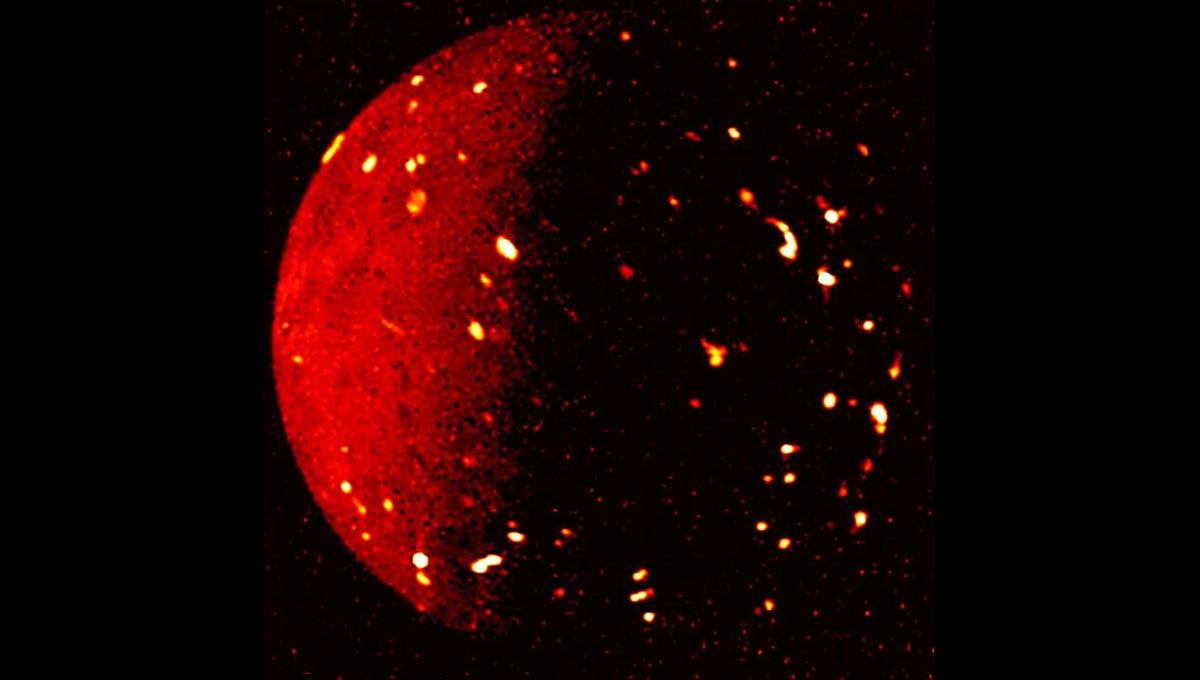
Jupiter’s moon Io is the most volcanic place in the solar system. The intense activity is powered by the complex gravitational interactions between itself, the gas giant, and its fellow moons Europa, Ganymede, and Callisto. NASA’s Juno mission has been studying the interior of Jupiter for several years and in its extended mission, it began to study the Galilean moons as well. Now, it’s Io’s turn.
Juno will perform a close flyby of Io on December 15, the first in a series of nine flybys that will take place over the next year and a half. Two of those flybys will be as close as 1,500 kilometers (930 miles) from the volcanic surface.
“The team is really excited to have Juno’s extended mission include the study of Jupiter’s moons. With each close flyby, we have been able to obtain a wealth of new information,” Juno Principal Investigator Scott Bolton of the Southwest Research Institute in San Antonio said in a statement. “Juno sensors are designed to study Jupiter, but we’ve been thrilled at how well they can perform double duty by observing Jupiter’s moons.”
Juno observed Ganymede in 2021 and Europa earlier this year. Its camera delivered the closest view of these moons in decades and its instruments were able to provide exciting new insights into these distant worlds.
The Jupiter Icy Moons Explorer (JUICE) from the European Space Agency will study these two icy moons in detail. Launching this year, it will arrive in 2031. NASA’s Europa Clipper will launch next year. Juno’s data will be invaluable in providing new insights not just of Jupiter, but the whole Jovian system.
Source Link: See Jupiter's Io In Infrared As NASA Prepares For Flybys Of The Volcanic Moon